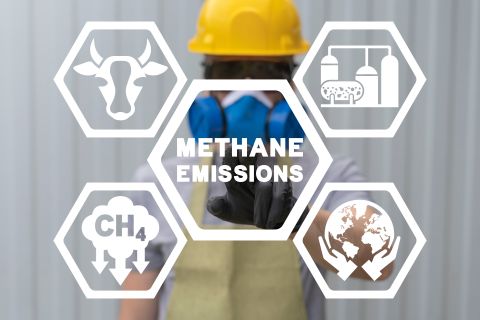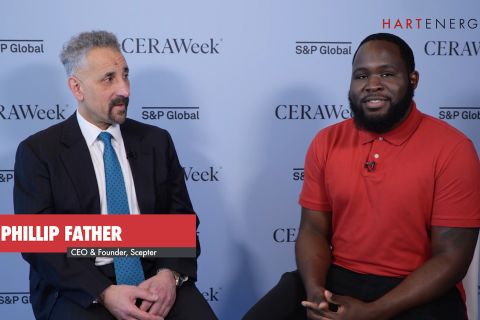
(Source: Miha Creative/Shutterstock.com)
FORT WORTH, Texas—Relying solely on carbon offsets to hit net-zero targets isn’t going to cut it anymore, according to energy investors.
With a swelling number of corporations purchasing carbon offsets as a main source of reducing their carbon footprint, EIV Capital partner David Finan said a rising offset demand is coinciding with higher amount of capital that needs to be allocated to the business.
“If you think about the number of companies that are in the S&P 500 that have signed on for a net-zero commitment by 2040, that's a tenfold increase in the amount of offsets that are needed from today to 2040,” Finan shared at Hart Energy’s Carbon Management Conference on May 16.
To acquire the necessary capital, corporations will need to do more for their emissions reduction goals than buying carbon offsets; they need to make more substantial moves toward reducing their carbon footprint and increasing transparency with investors.
According to Finan, investors are now more interested in the specifics of emissions reductions. They are no longer looking just for percentages of expected emissions reductions and offsets but also where the offsets are coming from—and the more transparent the data, the better.
Shift in driving forces

Ahead of the curve, EIV Capital was one of the first investment firms to look into the clean energy space, making their first renewable deal in 2010, their first carbon-negative deal in 2017 and their first upstream deal in 2021.
Where other investors saw an area with limited profitability, EIV saw an untapped marketplace. Now, other firms are entering the space as the business of renewables and carbon management has snowballed into a sustainably lucrative business.
“Within eight years, you've seen the world go from, ‘We're not going to invest in you because you did renewables’ to ‘We did our first upstream deal last year,’” Finan said. “When we did it in 2010, it was on the back of commercial contracts that we had a 20-year PPA [power purchase agreement] that allowed us to underwrite, no assumption other than the cash, we're going to come in the door.”
While a large number of American operators have been basing their emissions targets around the Paris Agreement, Finan has seen a shift in who dictates how much needs to be reduced and by when. In March, the U.S. Securities and Exchange Commission (SEC) proposed new guidelines that would require energy companies to disclose Scope 1, 2 and 3 emissions to investors.
“These proposals for GHG [greenhouse-gas] emissions disclosures would provide investors with decision-useful information to assess a registrant’s exposure to, and management of, climate-related risks, and in particular transition risks,” the SEC report stated.
To proceed with these SEC proposals, Finan said that the businesses often go through the process as though they were being audited. They collect emissions data to determine if it is “accretive or dilutive” to the company’s key performance indicators (KPIs) as they would when looking to buy or sell an asset.
“Capital is focused on this because we're already seeing it in some of the sales processes that we're running this year, but people care about where the emissions profile is, and whether or not it is accretive or dilutive on a KPI basis where our mission offsets today, you can see they're roughly split 50:50 between nature-based carbon offsets and industrial based reduction of carbon offsets,” he added.
More capital, more change
With greater attention and investment into the clean energy space must come more capital spending, according to Finan. Even ardent supporters of the energy transition have admitted to only spending half the capital necessary to reach their goals.
One-third of annual capital spent still falls to high-emissions forms of energy. Furthermore, it is estimated that an increase of about $3.5 trillion is needed to get the funds needed to secure net-zero targets globally. Taking inflation into account, the rising costs could climb even higher.
“Hitting those [emissions] targets just gets harder and harder. It's a reason why a lot of capital is focused on it,” Finan said.
“Another reason why capital and companies are focused on it is…companies who have stated ESG goals and stated emission reduction targets are now starting to trade at a higher valuation,” he continued. “So companies are seeing this and they're going, ‘Well, I want to trade at the highest multiple I can trade at. I'm going to want to get on board with this.’”
With both global energy consumption and the human population escalating at a rapid pace, many are rethinking how quickly they can achieve net-zero emissions, if at all. However, Finan believes that alongside the growing need for energy is a growing number of people committed to lowering emissions and tackling the daunting task of achieving net zero.
“When you look at the trend, how quickly the velocity of people who matter are changing their mind on this, it's fairly astounding,” he said. “When you see people move this much in one direction, if you are in control of your business, you should be paying attention to this.”
Recommended Reading
SAF End-users, Producers Talk Challenges, Solutions
2024-02-07 - The lower lifecycle emissions of sustainable aviation fuel are seen as a key lever for airlines to reduce carbon emissions, but cost is a challenge.
Qnergy Tackles Methane Venting Emissions
2024-03-13 - Pneumatic controllers, powered by natural gas, account for a large part of the oil and gas industry’s methane emissions. Compressed air can change that, experts say.
SEC Adopts Climate Disclosure Rules in 3-2 Vote
2024-03-06 - The regulation requires companies to disclose Scope 1 and 2 emissions, weather-related risks and other climate-related data that could have a material business impact.
MethaneSAT: EDF’s Eye in the Sky Targets E&P Emissions
2024-03-07 - The Environmental Defense Fund and Harvard University recently launched MethaneSAT, a satellite tracking methane emissions. The project’s primary target: oil and gas operators.
Exclusive: Scepter CEO: Methane Emissions Detection Saves on Cost
2024-04-08 - Methane emissions detection saves on cost and "can pay for itself," Scepter CEO Phillip Father says in this Hart Energy exclusive interview.





